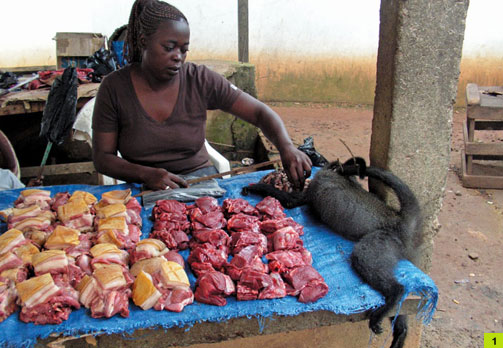
SARS-CoV-2, the virus that causes COVID-19 is the third major outbreak of a dangerous beta-coronavirus. We have known about beta-coronaviruses in the human population since the 1960s but have never been able to develop a vaccine. The most likely scenarios are that the virus fizzles out like SARS or it simply becomes part of the normal ‘flu’ season. The real concern is not COVID-19 but the next virus that tramples its well-worn path into the human viral landscape.
Beta-coronaviruses are descended from the bat gene pool, but some can directly or indirectly (via other mammals such as camels, mice, anteaters and cats) infect humans.
These viruses have been bothering humanity for at least a century, that we know of. The common cold is a beta-coronavirus (CoV OC43) that was first detected in 1965 and another common cold variant (CoV-HKU1) has been in widespread circulation in the population since at least 2005. A 2016 study of 1208 patients with respiratory disease in Cleveland, Ohio for example showed that 18 had HKU1, 18 had OC43 and 7 had other less common cold variants (NL63 and 229E). A similar study in Malaysia in the same year detected 26 OC43 and 22 HKU1 cases in a 2060 patient sample. A genetic study of OC43 and HKU1 suggest both share a common ancestor and have been in human circulation since the 1950s.
In late 2002, we discovered that beta-coronaviruses can be more dangerous than the common cold. A new variant, later christened SARS-CoV, the virus that causes SARS, was something very different. Death from viral pneumonia was a real possibility. It became our first know coronavirus pandemic during its brief run over the northern winter of 2002-2003. It was limited to 8,096 cases resulting in 774 deaths, mostly in southeast Asia.
One of the earliest known cases was a chef in Shenzhen, near Guangzhou, Southern China. He regularly handled recently butchered wild game. His wife, two sisters, and seven hospital staff who had contact with the family were all diagnosed with SARS-CoV. From 16 November 2002 to 9 February 2003, a total of 305 cases were reported in mainland China, with more than a third of those cases involving health care workers.
The virus reached Hong Kong on 21 February 2003, when a Guangzhou doctor, infected by his patients, visited the city. Within a day, he’d infected 16 other people in the hotel he was staying in. Those people unwittingly carried the virus to 30 other countries over the following 6 months.
Subsequent analysis established that the likely natural reservoir for the virus was Chinese horseshoe bats. SARS-CoV is a zoonotic virus, which means it is a virus that is transmitted between animals and people, but once established in the human population it is easily spread from person to person.
The incubation period was between 2 and 14 days and the average person with the disease would infect between 2 and 4 others. Unlike influenza viruses, which are most infectious in the first 2 days of illness, infection from symptomatic SARS patients usually occurred on or after the fifth day of onset of disease. That is in line with the rising viral load in nasal mucus which peaks at around day 10. Fever, chills, dry cough and muscle pain were the major symptoms. Infections in children were milder than those in adults. And SARS in pregnant women carried a significant risk of death.
The most important route of person-to-person spread was inhaling infectious airborne droplets or touching hard surfaces those droplets have landed on (and then touching the face, or food). The virus can survive on hard surfaces for up to 7 days but is easily inactivated by soap, alcohol or other common disinfectants. The virus lasted longer on disposable plastic hospital gowns than on cotton gowns. Cotton gowns were therefore preferred in hospital care settings. Subsequent tests also revealed that transmission risk from paper was very small. Even where a page was sprayed with a significant viral load, viable virus particles could not be recovered after the paper dried.
By far the most likely place to become infected was in hospital. Hospital transmission was much more likely where nebulizers, suction, intubation, bronchoscopy, or cardiopulmonary resuscitation on SARS patients were used. All those procedures generate large numbers of infectious droplets. Around half the Hong Kong SARS cases were acquired in hospitals.
The SARS pandemic eventually fizzled out, not because of anything we did to stop it but because it developed an, as yet unexplained, mutation which impaired its ability to spread.
Subsequent studies showed the virus infected between 13 and 40% of asymptomatic food animal handlers in southern China. It is likely the sustained exposure of the animal handlers to live and recently deceased infected animals was a perfect testing ground for mutations which could jump from animals to humans. Handlers were constantly exposed to variants of coronaviruses, with one eventually breaking through by successfully developing the ability to infect humans.
Like other viruses such as influenza A or Ebola, SARS-CoV possessed the ability to evade the innate immune system, the part of our immune system that reacts instantly to a foreign pathogen. Our long-term immune response, the adaptive immune system is not fooled. It begins manufacturing anti-bodies against SARS-COV at around day 7. Manufacture plateaus at around 60 days but is maintained for over 12 months, probably conferring immunity against reinfection.
A decade after SARS-CoV wiped itself out, another lethal outbreak of a coronavirus was detected in Saudi Arabia. MERS-CoV, the beta-coronavirus that causes MERS (Middle Eastern Respiratory Syndrome) has since infected around 2,500 people and caused around 750 deaths. MERS was directly transmitted by camels which at some time in the distant past acquired it from bats. MERS is significantly less transmissible than SARS, requiring lengthy, unprotected close contact with an infected person undergoing medical treatment. It is still an active infection in the Middle East.
SARS-CoV-2 is the latest and by far the most virulent member of the family. It appears to be almost identical to SARS-CoV except it has not, so far, acquired the self-limiting mutation which stopped SARS in its tracks. We are now learning what SARS would have been like if that had not happened. So far it has infected 1.8 million people and directly or indirectly caused almost 110,000 premature deaths worldwide. This is between a third and a sixth of the number of influenza deaths each year.
Bats are a major reservoir of beta-coronaviruses, but they are not the only risk for zoonotic diseases. COVID-19 is just the latest to join a list which includes Rabies, Ebola, bird flu, Hendra and over 200 others that we know have crossed from wild animals to humans.
The biggest driver of the explosion in zoonotic diseases is fast growing urban population in poverty-stricken parts of the world. The human population growth results in the destruction of rainforest habitat, bringing large groups of humans into close contact with animals and the diseases they carry. Feeding those populations is a significant problem and has accelerated the growth in informal markets which provide fresh meat to those people. A lack of refrigeration often means the best way to transport and keep meat fresh is to keep the wild animal alive until it is sold and butchered on the spot.
A virus is significantly more likely to be transmitted from a recently deceased and butchered wild animal than from traditional farming and butchering methods. Markets like these exist in China and throughout west and central Africa. They are essential sources of food for hundreds of millions of the world’s poorest people.
The world will get through COVID-19 once the virus either wipes itself out, we develop herd immunity or (much less likely) we develop an effective vaccine. But that is not the end of the problem. The same things which created it, will create its successor. And next time it could be something far worse. It is pure random chance that COVID-19 is not a disease as deadly as Ebola (it kills half of those it infects) and as transmissible as measles (every infected person infects 12-18 others).
There is probably nothing we can do to totally eliminate that risk, but a significant step towards lowering it is to ensure the people reliant on so-called wet markets don’t need them anymore. This means lifting them out of poverty and providing sufficient high-quality nutrition. And we need to do it very quickly or prepare now for the human and economic destruction that will inevitably accompany the next zoonotic outbreak.
Photo by Nathalie van Vliet

















What is the woman in the photograph doing with that animal?!